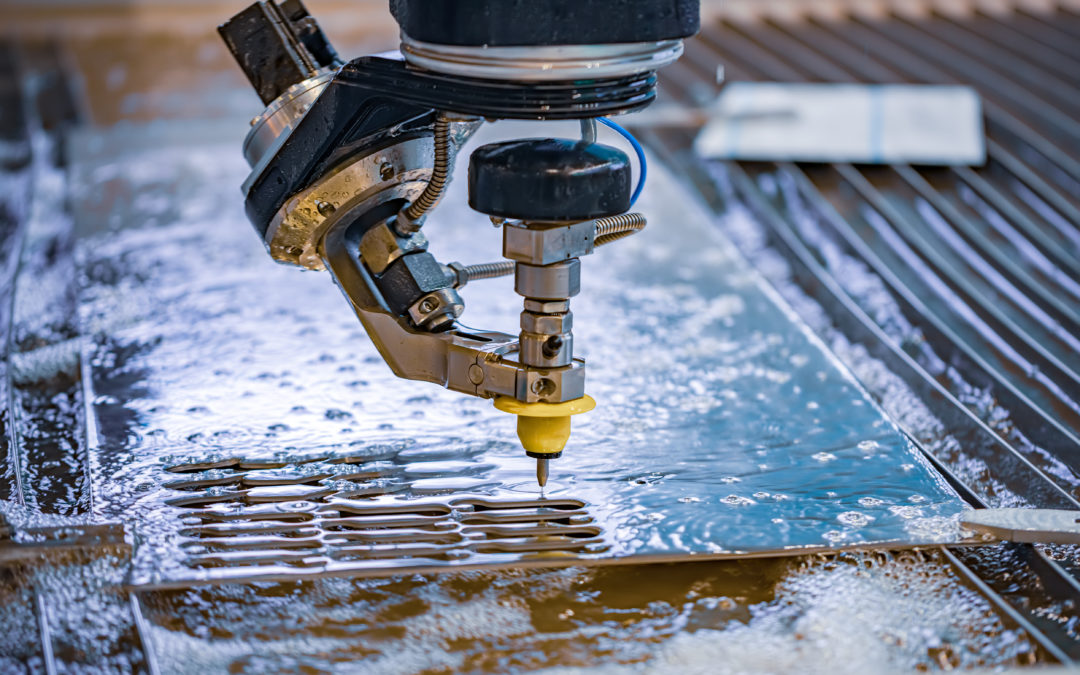Waterjet milling, also known as hydro milling, involves the use of high-pressure water mixed with abrasive grains or particles to perform machining tasks and shape materials. Waterjet mills offer some distinct advantages over conventional milling tools, such as high speed and superior surface finish. One of the downsides of waterjet mills, however, is that they can’t cut materials with any degree of hardness. In other words, waterjet mills are only good for soft materials.
What is Waterjet Milling
CNC waterjet milling is an excellent solution for many manufacturing and cutting applications. Starting with a block of material, a plasma torch sends out jets of high-pressure water that remove portions of material as they penetrate deep into metal, wood or stone. A computer controls all machine movements during these intricate cuts. This helps ensure precision over long production runs while also reducing potential errors. This type of milling uses less power than traditional machines, which lowers costs in addition to improving efficiency. Further, flat configurations or virtually any three-dimensional shape imaginable can use this. Read on to learn more about how waterjet milling works.
How Does it Work
Much like sheet metal bending and laser cutting, water jet milling is a subtractive machining process. According to Market Business News, Subtractive manufacturing or subtractive fabrication involves cutting away from a solid block of material. It could be a block of, for example, metal, plastic, or wood.
The cutters rotate at high speeds, up to 15,000 RPM, which allow them to remove material quickly. However, water-jets are unique in that they can also remove material at very low speeds. This allows for a lot of control over how much material is removed.
These factors make waterjet cutting an ideal process for creating complex parts with intricate details and tight tolerances. For example, because of their design, water jets can carve out any contour within an object. They excel at cutting anything from wax patterns and foils down to paper-thin sheets. However, regardless of their size or complexity, almost all components of a waterjet machine are recycled after use; as long as spare parts aren’t needed, old units never reach landfills or incinerators.
Advantages
Waterjet cutting is a great way to get clean, fast cuts on all sorts of materials. On one hand, waterjets typically have high accuracy, so if you need precision cutting—this is your best bet. No other cutting method comes close to the superior edge quality you will experience using waterjet cutting. Smooth, uniform burr-free edges are the reasons as to why designers and manufacturers specifically choose this cutting method.
The cutter achieves superior edge quality by using a combination of water speed, pressure, nozzle size and abrasive flow rate. They also generate very little heat; which means they can produce much cleaner cuts than laser or plasma cutters without affecting your material’s ability to bond properly. This makes waterjets an ideal choice for delicate materials like carbon fiber or foam. In many cases waterjet cutting eliminates the need for secondary finishing, which saves a substantial amount of time, cost and improves the efficiency within your production line.
Furthermore, because waterjets use coolant to power their cutting jets instead of a high-temperature beam like other types of lasers (like CO2), cuts will not char or smoke. Since it uses rapid coolant flow that discharges through nozzles at 10,000 PSI, it has excellent throughput capabilities compared with other common methods such as sawing or milling.
How PartsBadger Can Help
PartsBadger provides a comprehensive toolset for designing and manufacturing high-quality custom parts. Receive an instant quote immediately after requesting. Our easy-to-use online platform allows you to send us your design files. We’ll take care of everything else! Click here to learn more about how PartsBadger can help with your next project.


Recent Comments